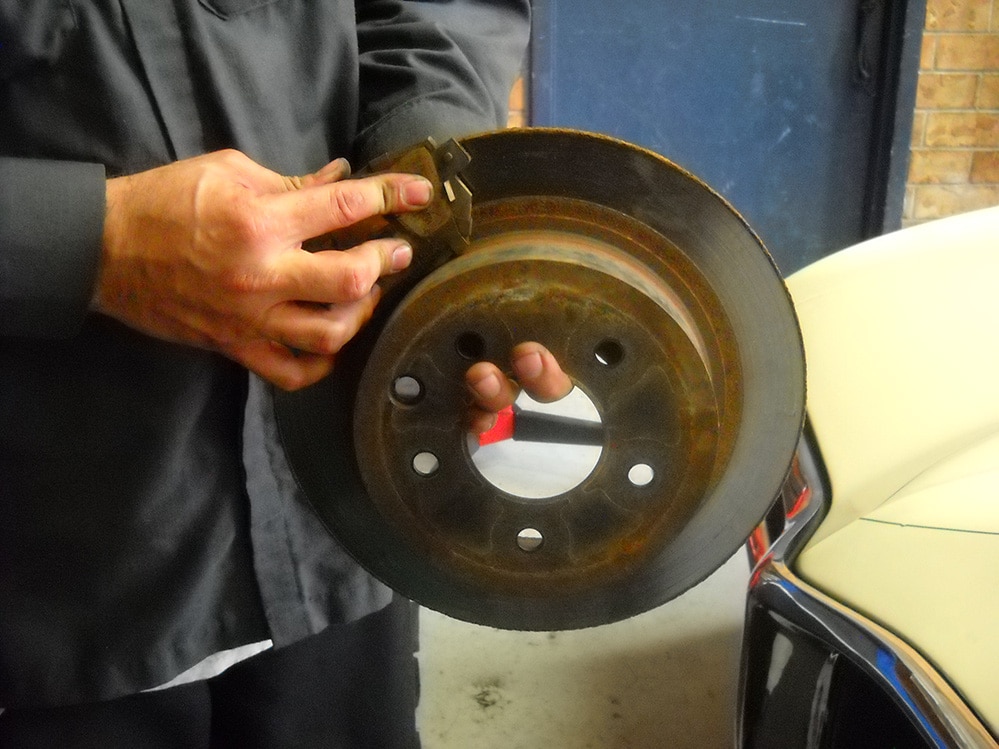2020 has really been a year of self-reliance. It certainly is not as convenient as it used to be to get things done with stay at home requests. This means we have all had to rely on ourselves more to maintain and fix things around the home. Same goes for most of us when it comes to cars.
Many classic car owners already do enjoy restoring and repairing their prized possessions themselves, but we though it would be a good idea to help refresh the mind with the task of inspecting and maintaining brake rotors.
A classic car involves many mechanical parts that you must comprehend and manage. Brake rotors are one of the vital elements of a vehicle. And even if you have top-of-the-line brake rotors installed in your classic car, without proper maintenance they will quickly wear out and need replacing.
That’s why you need to know how to take care of your brake rotors, and for that, you need to know their different types and how they work.
What are Brake Rotors?
Brake rotors or sometimes called brake discs are a crucial element of the brake mechanism of your vehicle. If you want the simple answer; brake rotors make use of the brake pads to stop the wheel by clamping down on it.
A brake disc is round in shape and comes in a metallic construction. You can actually see it through the spoke of the wheel since it is attached to the wheel hub. They are usually attached to the rear axle of the vehicle, but in some modern cars, the front axle also comes with brake rotors installed.
How Do Brake Rotors Work?
The idea of brake rotors is simple. When you activate the brake, the pads contact the brake rotor using a caliper. It is done using hydraulic pressure created by the main cylinder and transferred to the caliper using metal lines and rubber hoses.
The brake rotor absorbs the heat that is created due to the friction when the pad contacts the rotor. So, the primary function of the brake rotor is to absorb and dissipate the heat energy generated when activating the brake. This entire process takes place when you press down on the brake or slow your car down.
Different Types of Rotors
There are generally four different types of rotors found in different vehicles.
- Blank & Smooth – These rotors come with a blank and smooth metal surface. You can find them commonly in passenger vehicles.
- Drilled – These types of rotors come with drilled holes around the surface.
- Slotted – Featuring an improved brake output; slotted rotors feature long channels along the metal surface
- Drilled & Slotted – A combination of drilled and slotted; this rotor gives the best performance.
How to Maintain Your Brake Rotors?
Without regular cleaning and proper maintenance, you cannot expect your rotors to survive for an extended period. They are an essential component of your car, and you should develop a regular routine for cleaning them. This step-by-step guide will help you understand how to clean your rotors properly.
Step – 1. Find level ground to park your car. To access the rotors, first you must lift the car using a jack, and you do not want to do that in uneven terrain. You should also place tire chocks around the vehicle to prevent unnecessary movement while you work.
Step – 2. Use a lug wrench to loosen the nuts on the tire. This step is quite tricky if you lift the car beforehand. So, it is advised to do it when the vehicle is on the ground.
Step – 3. Lift up the car using jack stands. If you do not know the best placement, you can always check the car’s manual book.
Usually, the point to place the jack is quite easy to find. Make sure that you are using a secured position and not the paneling. As long as you are placing the stand on a solid and even surface; you should be good. Using multiple jack stands is also a viable option to add better stability when you work.
Step – 4. Now that the car is raised and securely positioned, you can proceed with removing the lug nuts entirely. Once you remove the nuts, take the tires off. Getting rid of all the tires helps in speeding up the process of cleaning your brake rotors.
Step – 5. Make sure that the rotors require cleaning. In order to assess the rotors to see if they require maintenance, you have full access to the rotors.
Several issues may be responsible for your rotors not performing up to their full potential. If there are uneven wearing on the face of the rotor, the pads will not touch the rotors evenly. It can get dangerous over time if left this way.
However, rotors usually come with a lifespan of 40,000 to 60,000 miles of regular use. So, if you only cruise your classic occasionally, there is a good chance your rotors are still in good condition.
If this is not the case, the best course of action is to replace your rotors, otherwise proceed to step 6 to continue the maintenance routine.
Step – 6. Slowly clean the rotor using a stainless-steel brush. Rust build-up is a common culprit in poor rotor function. Using a stainless-steel brush can remove this fairly easily.
Step – 7. Use a grinder or lathe to get rid of any additional protrusions if you need it. However, only do this step if you have experience with a lathe machine. The last thing you want is to make the rotor uneven.
Brakes are, in truth, the most vital part of your vehicle. They help to ensure your safety, the safety of your passengers and of course the safety of your classic. Having a well-functioning rotor is important since, without it, your brakes will not be able to bring your classic to a stop as well as they should.
Taking care of your brake rotors can be time consuming, but it is essential to have peace of mind when put cruising around. Using the easy to follow steps mentioned above, you should be able to clean your rotors and take care of them with ease.

